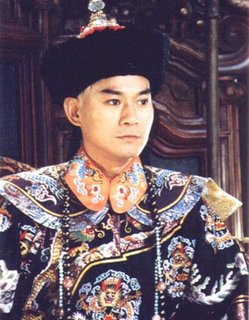

Discord
It is the year 1791 and the nations of the world vie back and forth for hegemony. The world is divided among numerous Empires, Kingdoms, Duchies, Principalities, and even Republics. The glories of the Old World and the newborn wonders of the New clashing back and forth. Diplomacy, intrigue, economics, and war crossing paths in equal measure. All tools to be used in the progress of ones goals. All across Europe cities expand and grow in decadence. The wealth of nations fed by their own innovation and imperialistic drives. Africa a battleground of colonial enterprise and native nations. Asia is beset by increasing outside pressures as its old civilizations are challenged by their Westward competitors. While the Americas may very well see the birth of nations never seen before. While at sea great fleets of sailing ships exchange deafening cannonades in the name of their nation.
The roleplay is essentially an alt history role play. There are however some points of history which still occur as guidance for players when thinking of ideas, and offering a base to work from at varying epochs, which will be listed below. The point of divergence is 1050 AD.
+The Little Ice Age occurs as it did historically. All macro environmental events in history occur as they did in OTL.
+The Black Death still occurs and follows much the same pattern that it did historically.
+The New World is not discovered until 1492 as it did in real life.
+Martin Luther still nails his Thesis onto the doors of Wittenberg Castle Church. However, the progress of the Protestant Reformation and resultant Counter-Reformation is up to individual players.
+The Thirty's Year War does occur in 1618 and end in 1648. However, the exact events, why it started, and conclusion is left to individual player histories.
+The Holy Roman Empire will still exist in 1791. But in what state is largely left to player histories.
Diplomacy, Fog of War, Time
Diplomacy is naturally an important part of the role play and likely the most common tool to be used by players aside from war. The latter being a potentially far more costly yet decisive method. Diplomacy can mean victory or defeat in the pursuit of your objectives far quicker and readily than warfare. Good diplomacy could mean a strong network of allies, economic dealings producing great bouts of prosperity, or even allowing one to carve up parts of the globe by holding a Congress of nations. All without firing a shot. However, should the saber be drawn and the black powder primed there exists a simple mechanic to simulate the chaos of warfare during the time period. The Fog of War.
Until the advent of telegraphs and railroads the act of conducting battles was a partially blind affair. Battle lines between various regiments or even divisions could stretch for many kilometers as various components of an army conduct maneuvers or engage, disengage, and flank their opposition. To simulate this, and also remove potential gridlocking that can plague RP battles, battles will use a simple mechanic regarding the issuing of orders and movement of units. In short players cannot react instantly to battlefield situations at the strategic level. A general if even on the optimal position of a hill ordering his cavalry, located say on the left flank, to conduct a charge at an objective will not be able to suddenly recall them due to their opponents reaction. Why? Two reasons: Because a messenger even going full tilt would be unlikely to catch them anyways, and also to make strategic decisions carry weight. Another one to put it is this is via example:
Player A: Orders cavalry to charge, not aware ICly about enemy infantry and artillery positioning.
Player B: Opposing general, who had infantry behind a low defilade, orders infantry to focus down on the cavalry alongside already drawn up and prepared cannons about to unleash cannister shot.
Player A: May see this, may issue a recall, but the cavalry won't suddenly and magically be able to retreat with no losses.
Player B: Opens fire. Players work out casualties OOCly as the battle undoubtedly unfolds on other fronts.
Player A: Can now say his cavalry is retreating.
This naturally leads to the issue of Time. The RP will be broken up into two parallel tracks. What I call the Macro-Timeline where I would ask players to put it in bold and in large font size. This notation of time will follow the OPs movements forward as we go month to month. As such the RP can be broken up into Month sized chunks. The second piece is the Micro-Timeline where players can RP various interactions between named characters and personalities like national leaders, diplomats, war councils, or even minor events to fluff out their posts.
Rules
1. Have common sense. Don't be surprised if frequent war mongering leads to others joining forces against you, and thus you're in a corner.
2. Be polite, remember patience is a virtue.
3. No god-modding, metagaming, or otherwise "cheating". Win with honour and lose with grace.
4. Realize the geo-political, geographical, and logistical situation of your nation and its disposition. No nation is great at everything. No army is unbeatable, nor fleet unassailable. Recognize if you're in a favorable or unfavorable situation and act accordingly. For good or ill, refer to rule 3.
5. Use your words. If you don't send out reconnaissance, then you have no reconnaissance. Now, this does not mean you have to exhaust yourself making ironclad posts. Rather, if you don't write sending out reconnaissance and a player assumes they can maneuver without you knowing then roll with it. That is after all a totally fair assumption any counterpart made.
6. Operators reserve all rights and their say is law. Players may of course debate decisions in a civil manner. But whining will not avail you.
7. Keep OOC and IC knowledge separate.
- Code: Select all
[box][DO NOT REMOVE : Voltaire]
[b]Application[/b]
[b]Nationstates Name[/b]
[b]Nation Name[/b]
[b]Flag[/b]
[b]National Anthem[/b] (optional)
[b]Capital[/b]
[b]Type of Government[/b]
[b]Head of State(s) [/b]
[b]Image of Leader[/b]
[b]Political Faction or Party in Power [Basically the powers that be in your nation][/b]
[b]Population[/b]
[b]Religion Breakdown[/b]
[b]Public Goals[/b]
[b]Private Goals[/b]
[b]Map Claims[/b]
[b]Total military size[/b]
[b]Breakdown of army[/b]
[b]Breakdown of navy[/b]
[b]Currency[/b]
[b]Major import/export partners [/b]
[b]Major Domestic Issues[/b]
[b]Major Foreign Issues[/b]
[b]History[/b] (where you put the history/alt history of your nation)
[b]Roleplay example link[/b]
[/box]
Reservation Application: Good for 48 Hours
- Code: Select all
Nation Name:
NS Nation Name:
Map Claims:





















